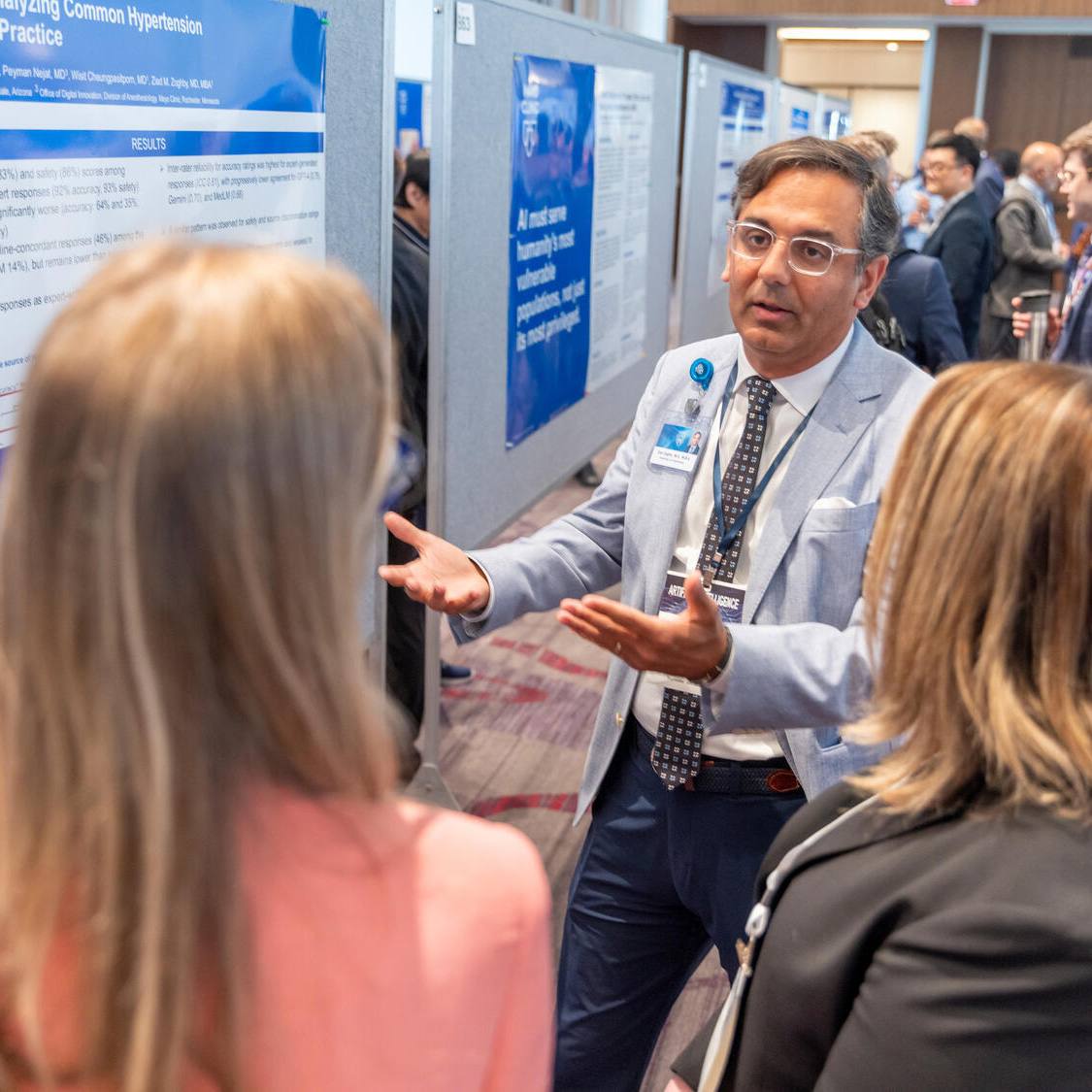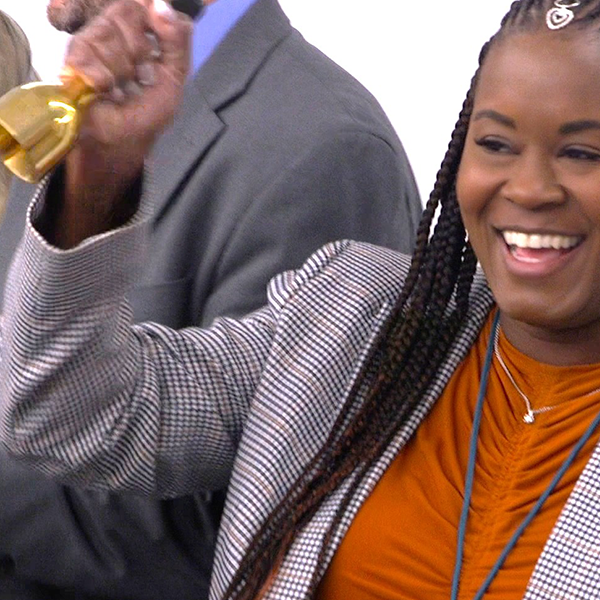-
Transplant: Research Makes More Organs Count
Several years ago, a surgeon checked on his patient and was pleased to find her sipping hot coffee in her hospital bed just one day after a lung transplant. If he was looking for a sign that the operation went well, he found it that morning. Delight turned to devastation a few days later when the patient developed a serious complication. Despite extensive lifesaving efforts by her care team, she did not survive.
"It was an upsetting outcome that left me scratching my head for weeks," recalls Mark Wylam, M.D., a Mayo Clinic pulmonologist. His patient died from excess ammonia in her blood, but no one understood the cause.
Dr. Wylam entered investigator mode. (It's a habit around Mayo Clinic.) Poring over the patient's tests and cultures in the month that followed, he found a tiny germ — "a little ammonia factory." Subsequent research by Dr. Wylam; infectious diseases experts Robin Patel, M.D.; and Elena Beam, M.D.; as well as other colleagues found that the donor likely transmitted the bacteria. These bacteria have a cousin germ that can cause the same issue, and those germs are present in as many as 1 in 10 lung donors. Now this team's Mayo-developed test can detect both microorganisms quickly.

Their science has saved lives. Donors and recipients are now treated with targeted antibiotics if either party's screening test is positive for the bacteria. "We haven't seen an ammonia infection since," Dr. Wylam says.
This work is among many research achievements underlying the success of Mayo's renowned three-site William J. von Liebig Center for Transplantation and Clinical Regeneration — the largest in the U.S. In addition to celebrating its 20th anniversary this year, the center will reach another milestone: 20,000 transplants. Decades of basic and translational science through the Transplant Research Center have laid foundations for advances in transplant for the benefit of patients at Mayo and beyond.
Staying Power for Donor Kidneys
"If a patient needs a kidney donation, we want it to last their entire life," says transplant surgeon Mark Stegall, M.D., who has collaborated on hundreds of research publications over the years. While kidney transplant is considered a highly successful operation, long-term survival of grafts remains an issue. Up to 30% of all kidney grafts will fail within the first decade after transplant, he says, meaning many patients require a second transplant down the road. Late loss of kidney transplant has been a major unresolved question in transplant medicine — a puzzle Dr. Stegall and colleagues are trying to solve.

Approaching this problem from multiple angles, they are conducting large surveillance studies of kidney transplants over time and analyzing graft tissue when things go wrong. Taken together, their findings have led to a greater understanding of the causes behind long-term kidney transplant failure. Based on their body of work, they recently challenged the larger research community to embrace a new strategy that has the power to rapidly advance this area of medicine.
Looking forward, Dr. Stegall's team is working with Mayo Clinic's Center for Individualized Medicine to determine whether a noninvasive biopsy and genetic test can predict which kidney and heart transplants are likely to fail. This may help physicians adjust individual immunosuppression medications that protect the organ over the long term. He and colleagues also have begun to harness the potential of artificial intelligence (AI) in transplant, teaching computers to read and analyze kidney biopsies. These analyses tell providers what's going on in the kidney before, during and after transplant. Their eventual hope is for AI to enhance what transplant pathologists are already doing: making biopsies more accurate and efficient.
Transplant research has inherent challenges, according to Dr. Stegall. Large randomized controlled trials — the gold standard — are difficult to conduct, given relatively small numbers of transplant patients. Nonetheless, he says, Mayo's research community has harnessed its strengths of patient volume and collaboration to drive discoveries in this area.

New Surgery Delivers the Goods for Patients
At Mayo, operating room innovations often go hand in hand with research. Such was the case for Julie Heimbach, M.D., a Mayo Clinic transplant surgeon who has pioneered a data-backed, lifesaving procedure for a subset of liver transplant patients who may otherwise be turned away.
The expanding obesity epidemic in the U.S. has led to a rise in nonalcoholic fatty liver disease, a leading indication for liver transplant. However, because obesity is a risk factor for serious post transplant complications, many patients who would otherwise benefit from transplant are never referred. In other cases, the surgery is performed, but the obesity is ignored, leading to poor long-term outcomes.

Dr. Heimbach conceived an idea to combine liver transplant and a weight-loss procedure called sleeve gastrectomy into a single surgery. To investigate its efficacy, she and colleagues collected years of follow-up data for dozens of patients who underwent the tandem procedure. They found this approach to be safe and effective in the long term. Compared to obese patients who underwent liver transplant alone, those who had the double procedure enjoyed better long-term outcomes for weight loss, blood pressure, insulin resistance and fatty liver. They also were less likely to need blood pressure and cholesterol medication.
The double surgery is offered at only a handful of hospitals, but its practice is growing. "This procedure can dramatically transform the future for patients who had no other treatment options," Dr. Heimbach says. "Its synergy gives a new freedom to patients who've struggled with obesity their whole lives."
How Research Can Wipe Out Waiting Lists
Despite extensive efforts to increase donor pools, demand continues to outpace supply. Twenty people die each day waiting for a transplant in the U.S., according to the Department of Health and Human Services. To reduce shortages, researchers are finding new ways to increase the number of organs suitable for transplant. "Mayo scientists are pushing the envelope for what's possible in this area," says David Douglas, M.D., a Mayo transplant hepatologist.
In one such effort, Dr. Douglas and colleagues joined a large multicenter research initiative aimed at innovating and improving use of kidneys from deceased donors. Previous research has shown that donor kidneys with less-than-ideal performance ratings offer survival rates similar to higher-rated kidneys, and that transplanting lower-rated kidneys offsets the risks posed to patients who would otherwise wait longer for a higher-rated kidney. But suboptimal kidneys continue to be discarded at high rates, and the kidney waitlist is the longest of all organs, according to the United Network for Organ Sharing, which coordinated the recent study.

In this work, the investigators evaluated which policies and practices most effectively reduced the number of discarded kidneys. They turned their findings into concrete suggestions that the participating centers could implement right away. In turn, the hospitals rapidly analyzed patient data to determine whether the changes led to improvements. The study showed increased use of donor kidneys and a boost in transplant rates.
"Mayo was recognized as an innovator in this arena, and its practices are being implemented across the country," Dr. Douglas says.
Another key way to increase the number of donations is through paired kidney exchange with living donors, a practice backed by evidence from numerous Mayo Clinic studies. Typically, when a patient needs a new kidney, the donation will come from a friend or relative. If that donor is not a good match, their goodwill need not go to waste. Through paired kidney donation, they can instead choose to give their kidney to a better-matched stranger. The initial intended recipient will then receive a suitable kidney from that stranger's original intended donor.
Dr. Stegall's team has conducted rigorous research to assess patient outcomes and maximize matches. In one project, Dr. Stegall; transplant surgeon Mikel Prieto, M.D.; and colleagues assessed Mayo patient data collected over a 40-month period and confirmed that considering multiple donors per recipient increases the chances of donation. In another study that included senior author Carrie Schinstock, M.D., the team conducted a retrospective analysis of Mayo's three-site kidney paired donation program, finding a myriad of advantages. Their data led them to recommend that all living donors and recipients consider paired donation, which benefits recipients and leads to an increased donor pool for those who may otherwise be difficult to match.
"Because of the high volume and sharing of expertise made possible by Mayo's three-site transplant program, our paired donation program has been strong and successful," says Dr. Stegall. "About a third of kidney donations at Mayo now take place through this system."

Finally, a team led by pulmonologist David Erasmus, M.B., Ch.B., M.D., is working to understand how to save more lungs with a new technology called ex vivo ― or "out-of-the-body" ― lung perfusion. Because delicate lungs diminish quickly after death, only 1 in 5 deceased organ donors willing to contribute a lung can actually do so. With ex vivo lung perfusion, a lung is removed from its donor, isolated and placed in a specialized chamber where it is resuscitated and supported, making otherwise marginal donor lungs suitable for transplant.
"The goal is to increase efficiency in order to maximize the number of lungs available for donation," Dr. Erasmus says. "Mayo patients are frequently among the first to benefit from innovative new techniques and technology. This research has already allowed us to conduct transplants for patients who wouldn't have received a donor lung under previous circumstances."
The researchers are evaluating the efficiency of a centralized approach to ex vivo lung perfusion, wherein a donor lung from anywhere in the U.S. could be sent to Mayo, cared for by experts using the new technology, and sent back for transplant in its intended recipient.
"Mayo has always been at the forefront of clinical medicine, and we're in the midst of an incredible opportunity to spearhead the area of transplant," Dr. Erasmus says. "Our large network and interdisciplinary approach to research leads to new transplant discoveries all the time, which are continually translated into new and better treatment options for patients."
— Sara Nick, April 2020







